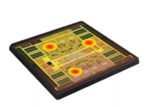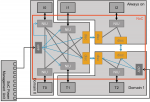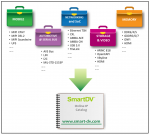During the COVID-19 pandemic I’m using Zoom and attending more webinars to keep updated on semiconductor industry trends, and one huge trend is the importance of AI applied to SoCs. Using more cores to handle ML and DL makes sense, but then how do you keep the chips within their power and reliability limits while at the same … Read More
Semiconductor Intellectual Property
AI, Safety and Low Power, Compounding Complexity
The nexus of complexity in SoC design these days has to be in automotive ADAS devices. Arteris IP highlighted this in the Linley Processor Conference recently where they talked about an ADAS chip that Toshiba had built. This has multiple vision and AI accelerators, both DSP and DNN-based. It is clearly aiming for ISO 26262 ASIL D … Read More
Synopsys – Turbocharging the TCAM Portfolio with eSilicon
About 90 days ago, Synopsys completed the acquisition of certain IP assets from eSilicon. The remaining entirety of eSilicon was acquired by Inphi Corporation. I was the VP of marketing at eSilicon during that acquisition so it’s very interesting to me to find out how things are going with those certain IP assets. I got an opportunity… Read More
SiFive’s Approach to Embedding Intelligence Everywhere
Before the advent of RISC-V, designers looking for embedded processors were effectively limited to a handful of proprietary processors using ISAs from decades ago. While the major ISAs are being updated and enhanced, they also are facing limitations from many decisions made over many years. RISC-V was conceived with a clean… Read More
Key Applications for Chip Monitoring
One of the side benefits of working with SemiWiki is that you get to meet a broad range of people and in the semiconductor industry that means a broad range of very smart people, absolutely. Recently I had the pleasure to meet Richard McPartland of Moortec. Richard and I started in the semiconductor industry at the same time but from… Read More
Using ML Acceleration Hardware for Improved DSP Performance
Some amazing hardware is being designed to accelerate AI/ML, most of which features large numbers of MAC units. Given that MAC units are like the lego blocks of digital math, they are also useful for a number of other applications. System designers are waking up to the idea of repurposing AI accelerators for DSP functions such as … Read More
Wi-Fi Bulks Up
Wireless discussion these days seems to be dominated by 5G, but that’s not the only standard that’s attracting attention. The FCC just circulated draft rules to dramatically expand bandwidth available to Wi-Fi in the new Wi-Fi 6e standard.
Is this a tragic plea for attention from a once-important standard, now eclipsed by its … Read More
Accelerating Edge Inference with Flex Logix’s InferX X1
For a long time, memories were the primary technology driver for process development. If you built memories, you got access to cutting-edge process information. If you built other products, this could give you a competitive edge. In many cases, FPGAs are replacing memories as the driver for advanced processes. The technology… Read More
How does TensorFlow Lite on Tensilica HiFi DSP IP Sound?
In all the hubbub about AI/ML, it’s easy to see why visual ML gets more attention. It’s got appeal because of applications such as autonomous driving. Because of this it’s easy to overlook the importance of audio ML. I own a Tesla and putting it into autopilot is very cool, but even it has voice recognition built in as an important feature… Read More
The Quiet Giant in Verification IP and More
In the technology industry, we’re all used to the hype about the latest and greatest. Semiconductor IP participates in the over-drive news cycle from time to time as well. So, when I see a company that has real, solid credentials but has resisted the temptation to over-hype, it gets my attention. I had an experience like this recently… Read More












AI RTL Generation versus AI RTL Verification